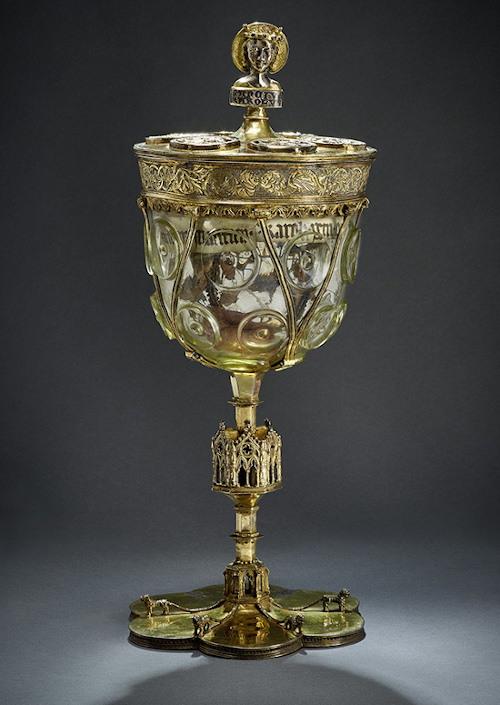Charlemagne reliquary
Glass: Byzantium, 9th/10th centuries, gold mount: Magdeburg (?), c. 1343, inv. no. DS068
Glass, silver, gold-plated, repoussé, cast, embossed, engraved, nielloed, gemstones en cabochon
The Charlemagne reliquary resembles an opulent, richly decorated, lidded wine glass. However, it is not used as a drinking goblet, but to hold some special relics: parts of the skull of Emperor Charlemagne. An inscribed strip of parchment names its contents. The bust of the emperor which acts as a knob for the lid confirms that it has been used for this purpose since as far back as the 14th century, but the glass itself is roughly another 400 years older, probably originating in the Byzantine Empire. As Charlemagne began to be increasingly honoured, it was given the new task of holding the relics due to its exceptional value. The emperor was, after all, highly valued in Halberstadt as the founder of the diocese and – since his canonisation in the 12th century – as a saint. The reliquary was probably created as veneration of Charlemagne grew and an altar was dedicated to him, around the middle of the 14th century.

